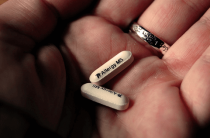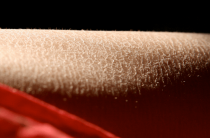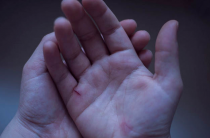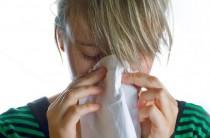Everyone, even without a predisposition to allergies, noticed a rash on their body. This often occurs when in contact with some insects, using inappropriate cosmetics and perfumes, wearing synthetic fabrics, etc. In addition to aesthetic discomfort, an allergy in the form of a rash on the body can cause a lot of other troubles: violation of the integrity of the skin, constant itching, discomfort, increased risk of infection.
Our skin perfectly shows the level of our general well-being. Healthy skin and a healthy body are synonyms. A varied skin rash is one of the main signs of an allergy. In addition, it can be evidence of a disruption in the functioning of the stomach, intestines, malfunctions of the immune system, contact with external stimuli, etc.
Types of skin rash
A rash on the skin is not an unambiguous phenomenon. It can arise, due to the influence of a wide variety of factors, it can have a different nature, localization, appearance, intensity, and many other indicators. If you are faced with a rash on the body, then you need to go to an appointment not at a cosmetic center (as, alas, many do), but at an appointment with doctors such as a dermatologist, allergist and therapist. A rash on the body is not a cosmetic problem at all, it is a consequence of disturbances in the functioning of the body. Most often, it occurs with allergies and requires an extreme degree of care, because it may not be the only option for the development of this disease. Many manifestations of allergies are far from being in such a harmless form for the patient.
A skin rash is prone to development, so primary rashes can evolve into secondary ones, which can differ significantly from the first. For example, food allergies often manifest as rashes, in the form of dermatitis. At first, it appears as small blisters, which then evolve into a crust, at the place of initial appearance.
In appearance, it can be divided into several types:
- A blistering rash is a small formation, in the form of blisters, which are filled with liquid, different in color and consistency. If their integrity is violated, they will transform into wet ulcerations. With allergies, this rash on the body is one of the most characteristic manifestations of allergic dermatitis. It can be of various diameters, which is measured both in a few millimeters and in centimeters. They can be localized in different parts of the body.
- Acne is a collection of small pustules. This type of rash is practically not found on the body of a patient with allergies, as a result of the development of an allergic reaction. However, it can be provoked by the use of various hormonal drugs to treat skin allergies.
- A blistering rash is the appearance of rashes on the body, which are characterized by swelling of the upper layers of the epidermis, the free space in which is filled with a colorless liquid. Most often, the cause of this type of rash during allergies is insect poison, contact with toxic substances;
- A nodular rash is the appearance on the body of small, pinhead-sized, round formations filled with fluid. Often accompanied by dermatological reactions with allergies. A nodular rash resembles a nodular rash in appearance, but is larger in size.
Most often, an allergic rash, with dermatitis, is localized on the face, folds of the joints of the elbows and knees, chest, and groin area. A rash with urticaria is often manifested by the formation of rashes, a reddish hue, which can be located in various places on the skin.
Rash with allergies in the form of dermatitis
Allergic dermatitis is a type of allergic reaction of the body that occurs after contact with an allergen. For the appearance of allergic dermatitis, it is necessary that the patient's body acquire sensitivity, which occurs after initial contact with the allergen.
Allergic dermatitis is a type of body response to an allergen, which occurs under the influence of specific antibodies (IgM). The slow development of allergic dermatitis is due to the fact that for the formation of this kind of rash, significant transformations of the skin are necessary, for which cells of the immune system migrate directly to the localization of the allergic reaction. This process is very long, so it may take several days from the beginning of contact with the allergen to the onset of symptoms of dermatitis.
Allergic dermatitis can be both contact and non-contact typology.
Contact allergic dermatitis develops as a result of a direct effect on the skin of the allergen. Such allergens are often components of cosmetics and perfumes, medicines, for external use, plant juices. Basically, with contact typology dermatitis, the rash is localized directly on the part of the body that was subject to contact. With a non-contact dermatological rash, its development is due to the penetration of the allergen through the gastrointestinal tract (food intake, drugs), or directly to the intravenous or intramuscular administration of medications.
Symptoms of a dermatitis:
- the development of red spots raised above the surface of the skin;
- in the future, the appearance, on the surface of spots, of the smallest bubble formations;
- in the future, the bubbles violate the integrity, resulting in the accumulation of liquid contents,
- which is then converted into a crust;
- the onset of a dermatitis rash may precede the appearance of areas on the body that are marked by drying and peeling;
- symptoms of allergic dermatitis are accompanied by swelling and vasodilation, in places of localization;
intense itching, in places of localization
Diagnostic methods:
Allergic dermatitis has an external specification that is strikingly different from the manifestations of a rash on the body, which develops outside the framework of an allergic reaction. However, during the definition of the disease, a fairly wide range of control diagnostics is used.
Skin tests are a specific diagnostic method that allows you to track the nature of an allergic rash that develops with direct contact of the skin with allergens. To do this, a standardized allergen solution can be applied to the patient's body using various methods: a special dressing, injections, insertion into small incisions. The disadvantages of skin tests, with dermatitis, include their lack of information in case of food allergies, as well as the impossibility of conducting them, during the onset of symptoms of the disease, in pregnant women, young children, in the presence of an infection in the body.
Also, with a dermatic rash, special blood tests are carried out, which diagnoses the body's reaction to contact with allergens that are injected into the blood withdrawn from the patient. This diagnostic method is completely safe for the patient and is practically devoid of contraindications. positive is an increase in the level of general or specific antibodies, with the introduction of the allergen. If the dermatological rash is of a food or medicinal nature, then this test method is more informative, since it is able to diagnose the presence of specific antibodies that are involved in the development of food allergy symptoms.
Treatment of dermatitis
Fortunately, for patients, dermatitis on the body is successfully treated with modern medicine. At the heart of the treatment of any kind of rashes on the body, of an allergic nature, the greatest importance is the prevention of contact of the patient with the allergen.
If the irritant has already got on the skin, it is necessary to remove it from the skin with soap, then dry the place of contact thoroughly with a towel made of soft, natural fabrics.
To relieve the symptoms of a dermatic rash, special antihistamines are used (tavegil, claritin, erius, diazolin, azelastine, etc.), as well as corticosteroid drugs, which are used as a means of short-term therapy for acute allergy symptoms. There is also a widespread use of hormonal ointments, which is an effective tool for removing skin manifestations of allergies. However, they are not recommended to be used for more than a week, to prevent skin side effects, and in the case of using strong hormonal ointments, as well as a general side effect on the body.
Rash with hives
Urticaria is a manifestation of an allergic disease, which is characterized by the appearance of rounded inflammatory foci, with a tint from light pink to deep red. The areas of the allergic rash are slightly swollen, in the foci of inflammatory reactions there is an increase in temperature. Urticaria may or may not be accompanied by itching. Places of localization, with urticaria, can be very different. The appearance of urticaria, which is characterized by rapid spread throughout the body, as well as itching, can be a harbinger of such potentially dangerous forms, with allergies, as anaphylactic shock or Quincke's edema.
A rash in the form of urticaria can develop when exposed to allergens of various nature, mainly they are: the poison of stinging insects; allergens of citrus fruits and berries; ultraviolet radiation; exposure to cold; when exposed to cosmetics or household chemicals.
Urticaria can have both acute and chronic manifestations. Acute urticaria is characterized by the rapid development of symptoms, which disappear just as quickly after contact with the allergen. In contrast, the chronic manifestation of urticaria lasts longer, but with less symptoms.
Urticaria treatment
Treatment of urticaria with medicines is carried out with the help of antihistamines, corticosteroid injections, various hormonal ointments are also widely used, as well as taking vitamin-mineral complexes to improve the functioning of the immune system.
Diet for hives
Of great importance, in the elimination of an allergic rash, in the form of urticaria, are dietary measures. Foods such as canned seafood, chocolate, citrus fruits, strawberries and currants, tomatoes, sausages and sausages increase the symptoms of hives. If you observe an allergic rash on your body, then you need to include in your diet products such as sour-milk, non-allergenic vegetables and fruits, cereals, lean meats (chicken, rabbit, beef, turkey).
Body rash treatment
Modern medicine has a large number of tools that help in the fight against the symptoms of an allergic rash. An allergic skin rash, like other symptoms of allergic diseases, is caused by the hyperactivity of the immune system in relation to certain substances. At the moment, only immunotherapy agents can influence the very work of the immune system, in relation to certain allergens. This method involves the gradual introduction of the minimum dosage of the allergen solution, to which the body gradually begins to get used. This method can allow you to get rid of a rash on the skin for a very long time.
Body rash pills
A great advantage of antihistamines, which allows them to be used to treat various types of allergies, is their versatility. The use of antihistamines in the form of tablets is effective, including in the form of a skin rash. This is due to the fact that their active substances are able to neutralize the action of histamine, which is involved in the development of various allergic reactions.
Drugs such as suprastin, tavegil, demidrol, pipolfen can cause weakness and lethargy, since they also affect the brain. Their followers, newer substances (erius, claritin, cestine), do not penetrate the brain and are devoid of this side effect, which makes them extremely convenient to use.
Ointments for rashes on the body
Medicines in the form of ointments affect the condition of the skin, with allergies, which allows you to eliminate the rash, itching, irritation, moisturize the skin, when dry. They are divided by active substances, which can be both non-hormonal and hormonal.
Non-hormonal ointments
These drugs are practically devoid of side effects and contraindications. The use of lanolin creams, as well as ointments with panthenol and pro-retinol, can speed up regeneration processes, as well as moisturize and cool the skin, which has a beneficial effect on the symptoms of an allergic rash. Unfortunately, they do not affect local immunity, therefore they are not able to remove all manifestations of an allergic reaction.
Hormonal ointments
This category of ointments contains substances that are synthetic analogues of the human hormone - cortisol. They directly affect the production of antibodies at the site of application, cancel the transport of immune cells to the site of inflammation, reduce the production of histamine, thereby eliminating all allergy symptoms at the site of application. They are used in a short course, as they can cause atrophic transformations of the skin, their drying and the appearance of acne. These drugs include: (fluorocort, cortisone, hydrocortisone, betamethasone, prednisolone, elocom, flucinar, etc.)















